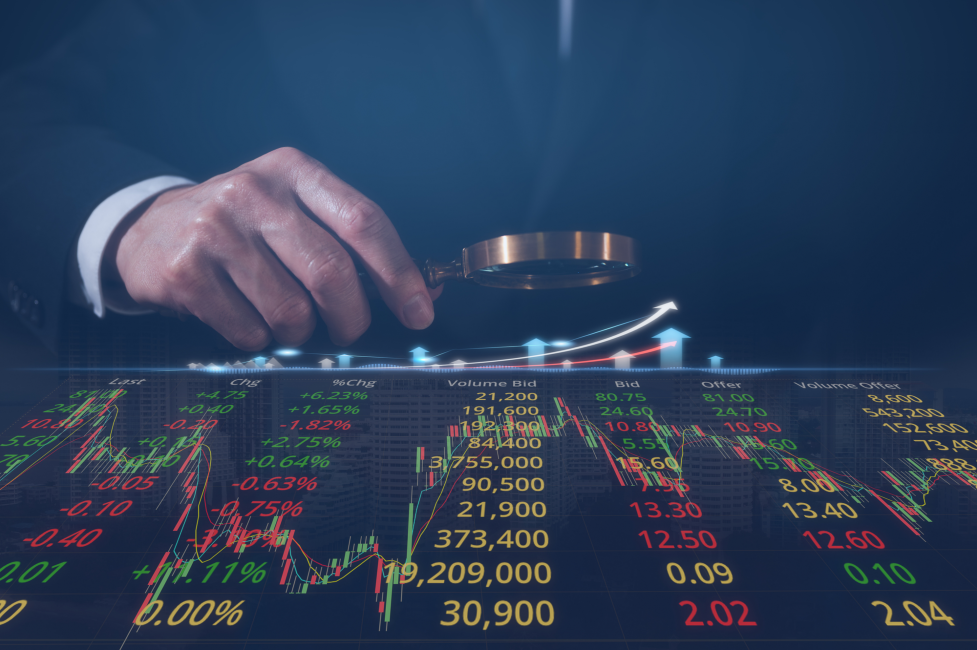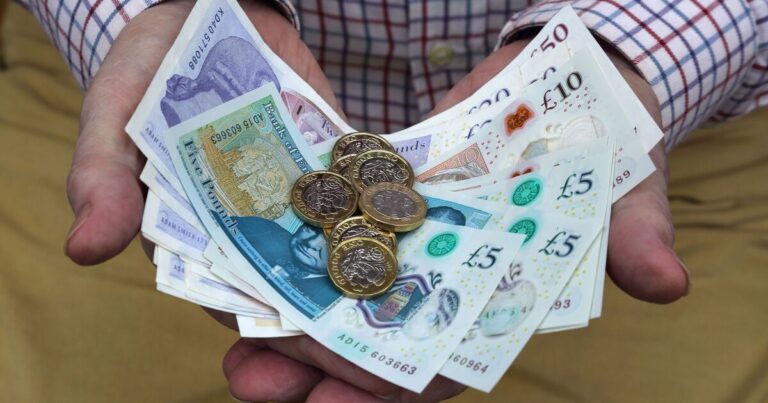This article is an on-site version of our Unhedged newsletter. Sign up here to get the newsletter sent straight to your inbox every weekday
Good morning. Tiger Global is looking to sell a big chunk of its portfolio of private companies in to the secondary market. It needs the cash to pay its investors. We’ll see more stories like this in the months to come; the economic cycle applies to private assets too. Email us: robert.armstrong@ft.com and ethan.wu@ft.com.
On Friday we wrote that the various economic reports and indicators are now, for the first time in a while, “singing from the same hymnal”. We are in a clear and pronounced slowdown, offset only by a seemly irrepressible consumer (who may soon be repressed by a weaker job market and diminishing savings).
As the economic context becomes increasingly clear, how are equity investors responding? Well, to a first approximation, they are responding by buying growth stocks:
As has been the case for the whole of this cycle, rates are part of the growth stock story. Growth started to outperform seriously in the early weeks of March, after the trouble started at the regional banks — and when the 10-year Treasury yield fell from 4ish to 3.5ish per cent, where it has stayed ever since.
This is not, however, a pure rates story. It makes a lot of sense to avoid value stocks in a downturn, too. Stocks with low valuations tend to have more cyclical business models, more debt and more vulnerable business models than high-valuation growth stocks. They tend to do well in economic recoveries and poorly in slowdowns and recessions.
So maybe what we are seeing is more a move away from value than a move towards growth. In any case, the result is a very unbalanced market, at least in terms of S&P 500 sector performance. Almost all the positive returns are coming from the growthy/techy sectors of communications, information technology, and consumer discretionary (remember that the consumer discretionary is weighted heavily to Amazon and Tesla).
As Robin Wigglesworth pointed out on Alphaville last week, AI-related tech stocks are doing much of the heavy lifting. He cites SocGen research finding that, if not for the AI trade, the S&P 500 would be down 2 per cent this year, rather than up 8 per cent.
High quality stocks are also supposed to outperform in a downturn (“Quality” generally refers to companies with high barriers to entry, and high return on equity as a result; low leverage and low earnings volatility are often factors as well). But because growth and quality stock screens pick out a lot of the same stocks, it is sometimes hard to make sense of what’s going on. I divided the S&P into quintiles by year-to-date stock performance and then looking at various growth and profitability metrics within the quintiles. While the top two quintiles had higher returns on equity than the bottom three, the signal that came through most clearly was outperformance by stocks with high valuations and fast recent growth:
It is particularly interesting, as Todd Sohn of Strategas pointed out last week, that the sector generally considered to be the most defensive, consumer staples, has only performed modestly well recently. In a downturn, staples companies’ stable profits should be attractive. Sohn offers a possible explanation. There are only three S&P 500 staples stocks that offer dividend yields higher than the 5.22 per cent available on a three-month Treasury (they are Altria, Walgreens Boots, and Phillip Morris). The appeal of defensive stocks is diminished when you have a short-term risk-free asset offer a positive real return.
In the entire S&P, I counted 38 stocks with dividend yields above the 3-month T-bill yield. Eleven of them are regional banks, eight are energy stocks, four are real estate investment trusts. Basically all of the 38 are highly leveraged or highly cyclical. None of them look, on first blush, like stocks to own in a downturn.
All of this raises the question: what is a defensive stock today, when the role of reliable real return is played by T-bills or other cash-like products? Might it look a little like a growth stock?
The best bet on the debt ceiling is the boring one. Though both sides have reason to do some brinkmanship, neither wants a default. So a last-minute deal will probably be clinched, as has happened before. Most markets are not pricing much, if any, debt-ceiling risk.
Some are, though. One-year credit default swap spreads are at an all-time high, and one-month bills are trading at yields 40bp above prevailing short-term rates. The chance of miscalculation is high enough, and catastrophic market impact big enough, for investors to care about a technical default. But figuring out what might happen in markets should the debt limit be breached is very tricky. Branching decisions and unknown quantities make it in effect guesswork.
We talked last week to a few FX specialists about what a technical default would mean for the US dollar. Most but not all of them expected a dollar-strengthening flight to safety. This made sense to us. And yet a recent JPMorgan survey of 123 of its institutional clients found over 70 per cent expect a technical default to weaken the dollar versus the yen, Swiss franc and euro.
What about Treasuries? JPMorgan’s fixed income strategists think short and long yields will fall as the X-date (when the government runs out of cash) approaches, noting that on average 10-year yields declined around 30bp around past debt ceiling near-misses in 2011 and 2013. Our regular correspondent Ed Al-Hussainy of Columbia Threadneedle adds that a bet on lower yields could work well if authorities intervene to keep markets running, probably with some kind of mini quantitative easing programme. But he cautions: “The starting level of rate vol is too elevated for a strong directional bet”.
However, if a technical default results in US sovereign-credit downgrades, higher yields would probably follow, argues Stephen Pavlick of Renaissance Macro. He points out that investment funds with AAA-credit quality investment mandates could be forced to divest from Treasuries, structurally lowering demand. How likely is a credit downgrade? Morgan Stanley’s public policy team explains (remember that S&P downgraded US debt back in 2011):
Both Fitch and Moody’s have recently commented that if they see the probability of a default increase materially into the X-date, they would likely move their AAA ratings to negative watch or outlook. Indeed, Moody’s moved to negative watch in July 2011 around three weeks before the X-date, and Fitch did so in October 2013 two days before the X-date. While neither ended up downgrading and instead eventually removed the negative watch, it shows it’s a possible outcome again.
After a default, rules are clearer on what happens: Initially, moving beyond the X-date would likely see a much higher likelihood of rating agencies moving their ratings to negative watch, if they have not done so already. However, actual rating downgrades would likely only come after an actual missed payment in which the rules are clearer.
For bills, the shortest-term Treasuries, the main question is how the Treasury Department would juggle its obligations in a technical default scenario. It could resort to “prioritisation”, paying off debt instruments with money meant for other programmes, like Medicare or the military. This, writes Morgan Stanley’s Efrain Tejeda, could deliver some, but not total, relief to the bill market, simply because Treasury could still run out of cash to pay off bills.
This is slippery stuff to write about, let alone trade. Sitting it out might be the best move. Judging by where bill yields are, some investors already plan to. (Ethan Wu)
Thoughts on writing from Prince Harry’s ghostwriter.
Due Diligence — Top stories from the world of corporate finance. Sign up here
The Lex Newsletter — Lex is the FT’s incisive daily column on investment. Sign up for our newsletter on local and global trends from expert writers in four great financial centres. Sign up here


















